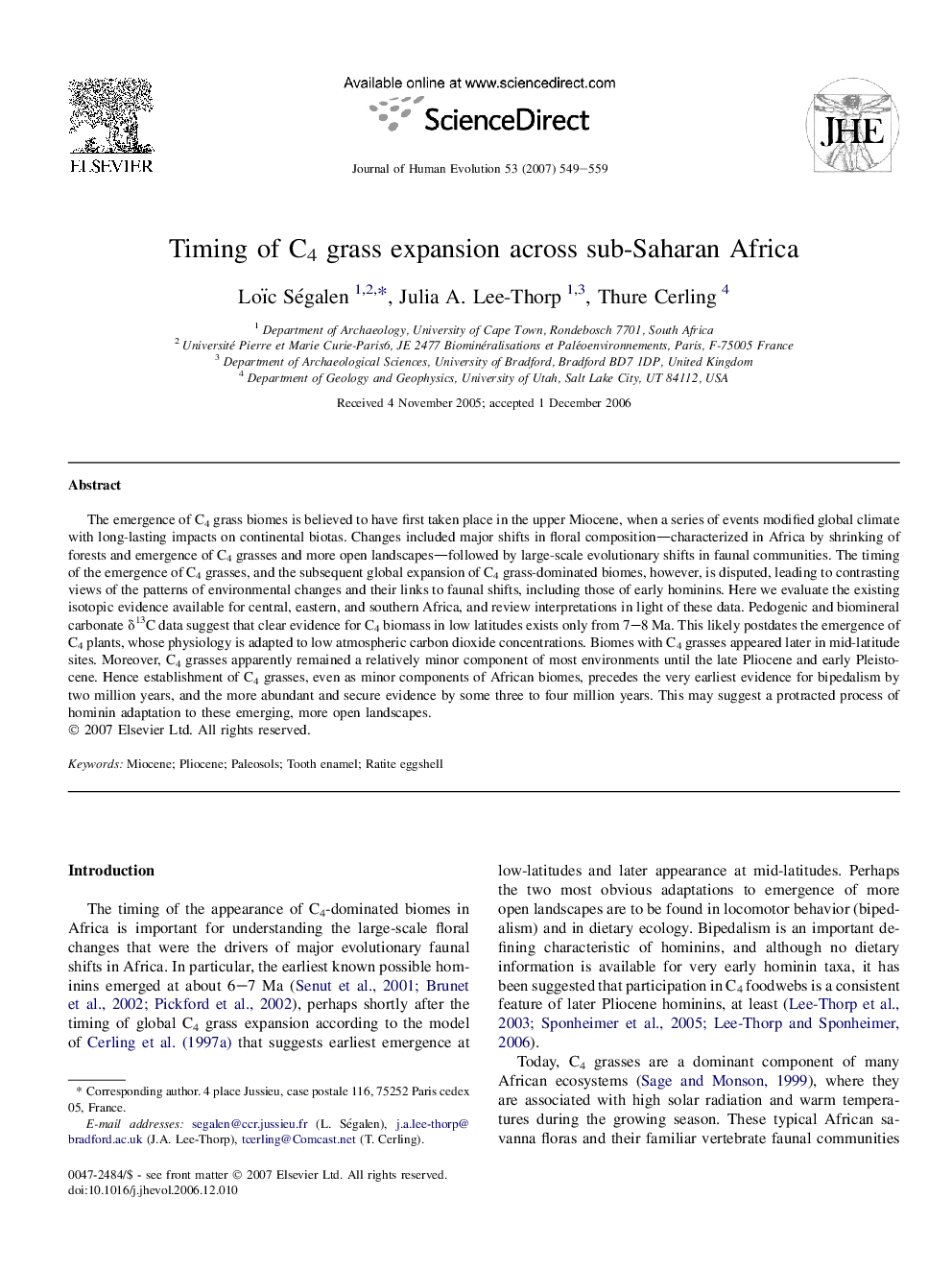| Article ID | Journal | Published Year | Pages | File Type |
|---|---|---|---|---|
| 4557196 | Journal of Human Evolution | 2007 | 11 Pages |
The emergence of C4 grass biomes is believed to have first taken place in the upper Miocene, when a series of events modified global climate with long-lasting impacts on continental biotas. Changes included major shifts in floral composition—characterized in Africa by shrinking of forests and emergence of C4 grasses and more open landscapes—followed by large-scale evolutionary shifts in faunal communities. The timing of the emergence of C4 grasses, and the subsequent global expansion of C4 grass-dominated biomes, however, is disputed, leading to contrasting views of the patterns of environmental changes and their links to faunal shifts, including those of early hominins. Here we evaluate the existing isotopic evidence available for central, eastern, and southern Africa, and review interpretations in light of these data. Pedogenic and biomineral carbonate δ13C data suggest that clear evidence for C4 biomass in low latitudes exists only from 7–8 Ma. This likely postdates the emergence of C4 plants, whose physiology is adapted to low atmospheric carbon dioxide concentrations. Biomes with C4 grasses appeared later in mid-latitude sites. Moreover, C4 grasses apparently remained a relatively minor component of most environments until the late Pliocene and early Pleistocene. Hence establishment of C4 grasses, even as minor components of African biomes, precedes the very earliest evidence for bipedalism by two million years, and the more abundant and secure evidence by some three to four million years. This may suggest a protracted process of hominin adaptation to these emerging, more open landscapes.
